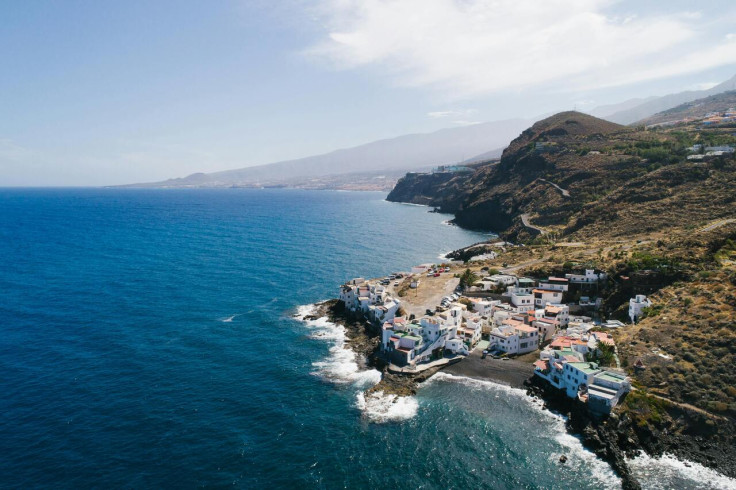Spain's Tourism Boom: Why Your September Getaway Is No Longer a Secret
Record-breaking visitor numbers are reshaping Spain's travel calendar

For years, many tourists have been leaving their holidays in Spain for the last days of summer. Why? Prices are usually lower and most people have already left, leaving the attractions almost uncrowded. That's exactly what a September getaway to Spain promised, but as 2025 continues, Spain's tourism sector has been experiencing an increase that has almost shattered previous records, with an amount of tourists that has surprised industry experts.
The traditional summer season has effectively expanded, creating a new travel calendar that challenges the conventional months to visit the Mediterranean paradise. This shift in travel patterns has particular significance for those who previously relied on September as a quieter alternative to the crowded peak months.
So, what's going on with Spain's tourism?
Well, the country welcomed more than 11 million international visitors just in July 2025 alone, making this the highest monthly total in its history. The total number of visitors during the first half of this year jumped to more than 55 million. Not only that, but the total spending increased too, skyrocketing at least 7.2% compared to previous years to over €76 billion (approximately £66.7 billion) in the first seven months of the current year.
This massive increase in tourism has changed the dynamics in how people travel, when they choose to take vacations, and what they expect from their Spanish holiday experience.
Instead of everyone visiting only in July and August, people have been spreading out their trips. In fact, about one in six travelers plans their holidays for September. This means that what was once considered an insider's secret has transformed into a fully-fledged extension of the high season, demanding new strategies for travelers who are looking for the Spanish experience they remember.
The statistical evidence confirms what many in the industry have sensed for some time. Spain welcomed a staggering number of international visitors in the first part of this year, with projections indicating these figures will continue to increase.
From Secret Season to Extended Summer
The traditional shoulder season of September has undergone a metamorphosis in recent years. What was once characterised by shorter lines, discounted accommodations, and a sense of having destinations largely to oneself has gradually given way to a different reality.
The pleasant weather conditions that mark this month have become a significant draw for travelers hat are looking to avoid extreme temperatures while still enjoying beach time and outdoor activities. Similarly, the Mediterranean waters retain their summer warmth well into September.
These advantages have not gone unnoticed, with a huge number of visitors now planning their vacations for September and October. This has resulted in a compression of the traditional low season and an extension of busy periods, a change that has caught many regular visitors by surprise.
The Canary Islands as a Seasonal Secret
While mainland Spanish destinations experience noticeable seasonal shifts, the Canary Islands present a unique case within Spain's tourism ecosystem. Their geographical position off the coast of Africa creates consistently mild temperatures throughout the year, with September averages hovering around 77°F (25°C) with minimal rainfall.
This climatic stability has made the archipelago a reliable escape not just for Europeans who are looking for the autumn sun, but increasingly for domestic tourists extending their holiday season.
The best part is that the islands have successfully diversified beyond their famous beach offerings, and now include a huge amount of cultural events, nature tourism, and adventure activities that appeal to this growing September market.
Also, it's worth noticing that since September has become so popular, many places get fully booked quickly, that is why exploring different types of accommodation is a must. For Gran Canaria, I recommend checking out VillaGranCanaria, which specialises in villas with private pools and other holiday rentals that give you space and privacy.
For other islands, look at reputable holiday rental sites like HolidayRentals365 to find your perfect home away from home.
The island's year-round appeal
The volcanic landscapes, unique microclimates, and distinct character of each island give a clear alternative to mainland destinations that might be experiencing more pronounced seasonal transitions. This consistent draw has positioned the Canaries as a year-round destination, with September becoming a popular option.
You will be able to try traditional food like gofio (a local grain), try Canarian wines, and don't be shy about joining in festival activities. The official tourism site Hello Canary Islands is a great resource for authentic experiences.
Conclusion
Spain's tourism transformation has permanently altered the September travel experience, and with year-round destinations like the Canary Islands as an option, it looks like it's dissolving the former boundary between peak season and shoulder season. This has led to a new high season that extends well beyond the traditional summer months.
Successfully navigating this new reality requires adjusted planning strategies, earlier reservations, and managed expectations about visitor numbers.
© Copyright IBTimes 2025. All rights reserved.





















